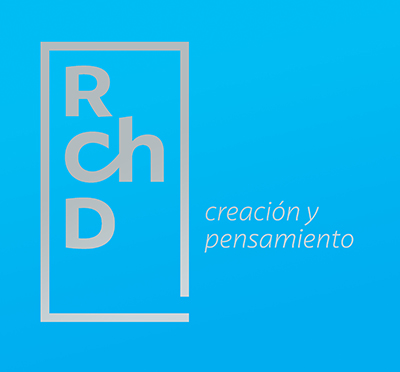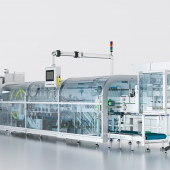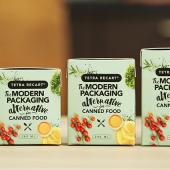Call for papers: Packaging Design in Times of Crisis
Packaging Design in Times of Crisis. Systemic Approach and Ethical Implications of the Project, Amid Environmental Impact and Social Change

RChD: Creación y Pensamiento
Vol.5, Nº9 / NOV 2020
ISSN 0719-837X
Guest editor
Erik Ciravegna, PhD, Pontificia Universidad Católica de Chile, [email protected]
Important Dates
Deadline for full manuscript submission: June 30, 2020 (at https://rchd.uchile.cl/)
Acceptance: August 2020
Publication: November 2020
Abstract
Packaging is a complex artefact with a multifaceted nature. In the current system of production and consumption, it represents a vital tool for the product: an indispensable protection shell to ensure the conservation and safety of its content; an essential interface to guarantee, instrumentally and communicationally, contact and interaction with its users. In certain contexts and situations - for example, in emergency conditions– packages can play a key role, ensuring access to clean water, food or medicine, helping prevent the spread of diseases and, ultimately, saving lives.
However, the serious crises that affect the planet at a global level are once again highlighting problems related to socioeconomic inequalities and the consequences of climate change, placing particular emphasis on the responsibilities of packaging –and, more specifically, of plastics - regarding resource consumption, waste production, and environmental pollution. Containers represent the visible footprint of the impact of human activity and are therefore perceived as the tangible expression of the excess and injustice of current models, a symbol of the ephemeral and the unnecessary.
In this scenario, the controversies around packaging require reflection, from a critical perspective and a systemic approach, on the roles and responsibilities of this designed artefact and its impacts on society and the environment. The invitation is for researchers, teachers, and professionals to contribute to this reflection with academic articles focused on the ethical implications of the project of a package and, at the same time, on the role that Design, both as discipline and practice, may plays in project direction, mediation, and synthesis in the packaging sector.
Call for papers
In the contemporary context, packaging is a complex artefact that has considerably expanded its functions over time. As an object of use, it has consolidated its nature as a “shell” of protection that preserves the product, extending its shelf life, and guaranteeing its safety and security; it allows for storage, transportation and sale; it supports physical interaction with the user, facilitating manipulation of the content and its container. In everyday life, and especially during emergencies like the ones we are currently experiencing in the health and social fields, packaging ensures access to essential resources such as water, food, and medicine, it helps prevent the spread of disease, and it can even save lives.
From another perspective, packaging has established itself as a powerful means of communication. It has enhanced its expressive qualities, characterized by appealing-conative, persuasive-seductive, emotional-poetic functions, among others, constituting one of the most effective tools in the brand system. Through labelling, it has become an indispensable medium for transmitting informative and prescriptive content –related to both content and container– relevant to people's health and safety, and care for the environment. Due to its massive dissemination in everyday life, it has become a true mass medium: by spreading messages of different kinds, it not only guides purchasing and consumption behaviours, but also contributes to build imaginaries, form people's tastes, and determine daily aesthetics.
Due to its complexity, the packaging project requires the intervention of different skills and the participation of multiple disciplines and therefore, implies adopting a systemic approach. A package must be understood as the result of an integrated set of choices made by a plurality of actors, each of whom plays a specific –direct or indirect– role in its definition. Within this ecosystem, Design plays a relevant role in project direction, mediation, and synthesis: designing a package means shaping solutions that are a place of convergence of perspectives, needs and choices expressed by the different parties involved in developing a product, and the multiple functions of the artefact, connecting the communicative dimension to the more strictly functional and operational dimension.
Due to its relevance in the contemporary economic and socio-cultural system, packaging has been the subject of constant innovation, particularly in the technological field, intending to improve its efficiency as an object of use; and, on the other hand, to reduce its impact on the environment, by applying circularity criteria both in production and consumption processes. The communicational dimension of packaging has been experimented with, generating substantial improvement in information delivery, amplifying brand identity, expanding the quantity and variety of messages transmitted; finally transforming packaging into a mass communication medium that guides people's choices and behaviours, and disseminates recommendations and warnings with social or environmental purposes.
However, packaging has also been the subject of strong debate. Packaging, as a complex artefact - necessary, but also ephemeral–, with broad dissemination in everyday life, and significant impact on society and the environment, has generated inevitable controversy. The inequalities at the socioeconomic level and the deep political instability generated by the serious crises that affect the planet - from climate change to the latest events that have occurred worldwide (social outbreaks and the most recent health emergency caused by the COVID-19 pandemic) -, once more question the current production and consumption systems, and especially resonate with the problem of waste management and the costs involved in packaging, particularly plastic, both in economic, social, and ecological terms. Packaging is considered by an important segment of the public opinion as one of the main causes of global pollution, the visible trace of human activity on the planet, a symbol of the unnecessary, and the tangible expression of the excesses of current models.
In this framework, Design is once again called to critically reflect on the controversies caused by packaging regarding its functions, responsibilities, and impacts. In this sense, the ethical implications of the project should take a new center for designers. It is also essential to foster the systemic approach to address complex artefacts like packaging, strengthening the role of project direction, mediation, and synthesis played by Design in the convergence of the perspectives and needs expressed by the ecosystem of actors involved in developing a product.



















